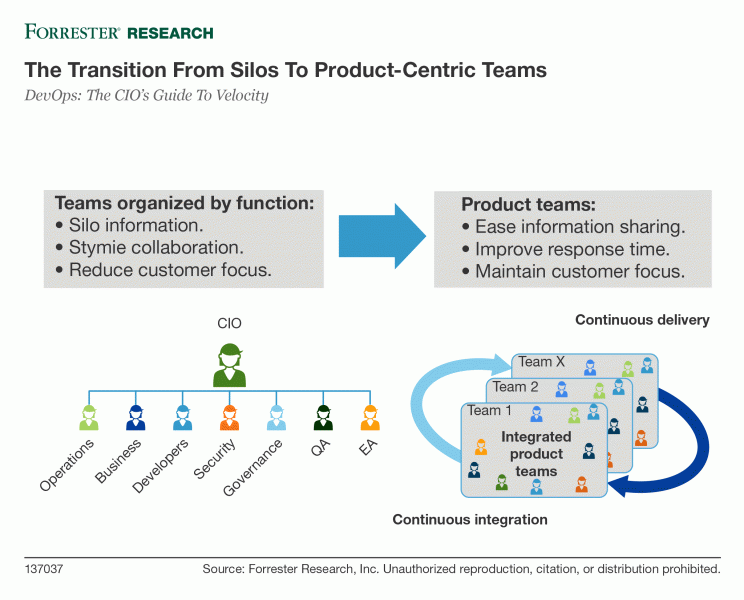DevOps Has Reached “Escape Velocity”, CIO’s Need To Get Onboard!
In an era where velocity and agility are driving technology management organizations over simple cost reduction, every business must constantly evolve to drive business differentiation. Leveraging practices such as Lean and Agile, smaller changes, automated pipelines and product centric teams, DevOps is transitioning from unicorns and small projects to company-wide initiatives. Companies such as Walmart, ING and JetBlue to name a few are leveraging DevOps to drive their business transformations and are reaping the benefits or accelerated velocity across the organization. DevOps is a powerful approach available to the CIO to drive velocity and agility, supporting the innovation required to drive business transformation.
Unlocking the value requires cultural change
To unlock the promise of DevOps, CIOs must lead and support a cultural change within their technology management organization. As any leader knows, changing institutionalized behavior is the toughest of all management challenges and CIOs are understandably skeptical of new trends. Despite this, CIOs must recognize when a trend becomes an imperative for survival. DevOps has become this imperative, and CIOs must engender a culture of collaboration and learning and enable their people with the right tools to drive holistic life-cycle automation.
Lean processes are critical to success
The removal of an institutionalized process is easier said than done, especially when the processes have been around a long time. A failure in the release process typically results in adding additional manual checks and balances which simply treats the symptom rather than solve the root cause. Based on my many end user discussions — the examination of the end-to-end processes for duplication or processes run in serial or an over complex approval chain can result in significant savings in not only time – direct costs as well.
Transition from technical silos to product teams
DevOps philosophy is based on collaboration among all teams, including the business, developers, enterprise architects, security, and tech management operations, to improve the speed and quality of delivering software. DevOps extends Agile development practices by streamlining all change through the various software development life-cycle (SDLC) stages developing and empowering cross-functional teams with full ownership The secret to success is transitioning the manner you are organized from silos to product teams which own the complete product life cycle from ideation to retirement[1]. Product teams will have complete ownership of the product from ideation to delivery and will be accountable for the success of the solution and its performance.

Replace silos of automation with Pipeline automation
Decreasing release cycle times requires automation across the entire life cycle not just within silos. Our research identified that only 29% of releases have complete lifecycle automation[2]. For instance, testing and building automation are commonplace, but you must automate other phases of the life cycle — such as releases and the handoffs between the automated steps — to ensure the fastest, most reliable life cycle possible. For example, an insurance company experimented with automation to enable faster deployment methods, removing inefficient gatekeepers with automated rollbacks saved the company $30,000 an hour[3]. Automation is one of the best tools available, yet all too often is not effectively leveraged as it drives not only velocity – it assists repeatability and consistency.
DevOps: supporting the CIO in their transformation
DevOps may be one of the most powerful weapons you have in your CIO arsenal, fundamentally altering how people work together to deliver business transformation. In our report, “DevOps: The CIO’s Guide To Velocity” we address how effective DevOps practices translate to customer value for your technology management organization and more importantly, your customers.
As always, I welcome your observations, comments, and experiences. You can contact me here and don’t forget to follow me on Twitter (@RobertEStroud).
[1]For more information on developing product teams, see “Organize And Staff I&O Pros For Successful DevOps Practices” Forrester report.
[2]For more information on silos of automation, see “The Need For Speed: Drive Velocity And Quality With DevOps” Forrester report.
[3]Source: "Consulting case studies," PwC, May 15, 2015 (http://www.pwc.com/us/en/advisory-services/case-studies/accelerating-software-releases-through-devops.html).